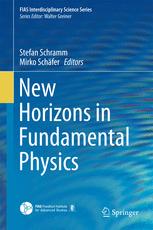

Most ebook files are in PDF format, so you can easily read them using various software such as Foxit Reader or directly on the Google Chrome browser.
Some ebook files are released by publishers in other formats such as .awz, .mobi, .epub, .fb2, etc. You may need to install specific software to read these formats on mobile/PC, such as Calibre.
Please read the tutorial at this link: https://ebookbell.com/faq
We offer FREE conversion to the popular formats you request; however, this may take some time. Therefore, right after payment, please email us, and we will try to provide the service as quickly as possible.
For some exceptional file formats or broken links (if any), please refrain from opening any disputes. Instead, email us first, and we will try to assist within a maximum of 6 hours.
EbookBell Team

0.0
0 reviewsThis volume presents the state-of-the-art in selected topics across modern nuclear physics, covering fields of central importance to research and illustrating their connection to many different areas of physics.
It describes recent progress in the study of superheavy and exotic nuclei, which is pushing our knowledge to ever heavier elements and neutron-richer isotopes. Extending nuclear physics to systems that are many times denser than even the core of an atomic nucleus, one enters the realm of the physics of neutron stars and possibly quark stars, a topic that is intensively investigated with many ground-based and outer-space research missions as well as numerous theoretical works. By colliding two nuclei at very high ultra-relativistic energies one can create a fireball of extremely hot matter, reminiscent of the universe very shortly after the big bang, leading to a phase of melted hadrons and free quarks and gluons, the so-called quark-gluon plasma.
These studies tie up with effects of crucial importance in other fields. During the collision of heavy ions, electric fields of extreme strength are produced, potentially destabilizing the vacuum of the atomic physics system, subsequently leading to the decay of the vacuum state and the emission of positrons. In neutron stars the ultra-dense matter might support extremely high magnetic fields, far beyond anything that can be produced in the laboratory, significantly affecting the stellar properties.
At very high densities general relativity predicts the stellar collapse to a black hole. However, a number of current theoretical activities, modifying Einstein’s theory, point to possible alternative scenarios, where this collapse might be avoided.
These and related topics are addressed in this book in a series of highly readable chapters. In addition, the book includes fundamental analyses of the practicalities involved in transiting to an electricity supply mainly based on renewable energies, investigating this scenario less from an engineering and more from a physics point of view.
While the topics comprise a large scope of activities, the contributions also show an extensive overlap in the methodology and in the analytical and numerical tools involved in tackling these diverse research fields that are the forefront of modern science.